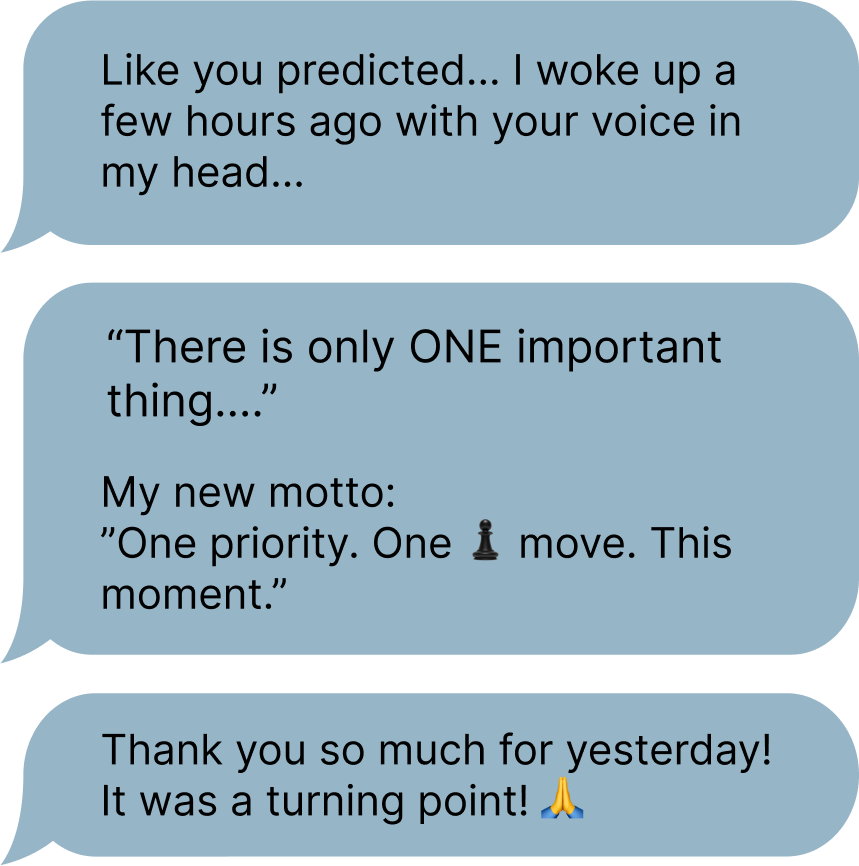How a Boutique Activewear Brand Found Its Footing Again
Sarah* still remembered the incredible buzz of celebrity influencers wearing her designs and kick-starting her brand into success. For a time, her company had created something that was different, couture active wear! But as she stared at her bank account several years later, the contrast was brutal. The line of credit was looking scary and losses were compounding.
*(*Name changed for privacy)

When Lightning Doesn't Strike Twice
Sarah's women's activewear brand had exploded early thanks to a few key celebrity placements. Her bold, distinctive designs caught attention in a crowded market. For the first few years, it felt like she could do no wrong. Then the copycats arrived. Bigger brands with deeper pockets saw what was working and created their own versions. Cheaper, faster to market, but without the soul and quality of the originals.
The market got noisy. Her designs which were once revolutionary, got drowned out. COVID was no help. Cash reserves started to shrivel, and family dinners became an interrogation about business decisions. Sleepless night brought new waves of financial anxiety. The worst part was that she felt completely alone. The very success that had once energized her now felt like a weight.
Where We Started
When Sarah reached out to Switch, she was drowning in the day-to-day operations of a business that had outgrown her ability to manage it. Our twelve-month engagement followed a simple but proven approach: treat the business like a patient and systematically diagnose what was actually broken. We started with what we call a value chain analysis. We picked one product and followed it from initial sketch all the way to customer delivery, tagging every opportunity for improvement (OFI) across the journey.
The issues fell into four clear categories: People, Strategy, Execution, and Cash. Each category was bleeding the business in its own way.
The People Problem
Sarah knew she had issues, but she couldn't pinpoint exactly what they were. We started by creating a clear accountability chart. Who was actually accountable for delivering what?
Once we had clarity on roles, we evaluated every team member for value alignment along with the EOS GWC test: Do they Get it? Do they Want it? Do they have the Capacity for it? Two people failed on all three counts. Those conversations happened on day one. It sounds harsh, but keeping underperformers in a struggling business isn't kindness to anyone. The remaining team actually thanked us later. They'd been carrying extra weight for months. We moved two high performers into expanded roles that played to their strengths, brought in an experienced marketing manager, and connected Sarah with bookkeeping and controller support through our partner network.
Most importantly, we instituted a weekly leadership pulse meeting. Every Monday, the leadership team would look at the same numbers, identify the biggest issue, discuss it openly, and solve it before anyone left the room.
Getting Strategic Again
The company had lost sight of what made the brand special. When you're in survival mode, everything feels urgent. We needed to help everyone to remember what was actually important. We ran workshops to paint a clear three-year vision, set concrete one-year targets, and break everything down into quarterly objectives and key results. Guessing and hoping are not strategies. We were going to know, week by week, whether we were winning. Then came the hardest part: the product line audit.
We call it the "Is it Juice?" test. The company had started with distinctive mesh leggings, the "juice." Beautiful, high quality activewear that women genuinely loved. But over time, they'd expanded into winter jackets, sleepwear, golf/tennis, etc. Hot dogs, tacos, and pizza as we like to say. The problem wasn't that these products were bad. It was that the company hadn't earned the right to sell them yet. The brand meant leggings and athletic tops to customers. Everything else was just confusion, too much choice, and a major cash drain.
For every single item in the catalog, we asked: Is this juice? Does this product reinforce what customers already believe about the brand, or does it muddy the waters?
The results were sobering. About 40% of her SKUs were actively hurting the business. They tied up cash, required creative and production energy, confused customers, and diluted what made the brand special. Lots of beautiful designs that nobody was buying because they didn’t match the brand narrative.
Going back to selling juice was hard. Each cut product represented hours of creative work, product sourcing, samples, photoshoots, marketing campaigns. But within three months, the cash flow improvement and time savings was significant.
Making Execution Predictable
Sarah is a creative. Her superpower is seeing possibilities, not managing timelines. But in a seasonal business like fashion, timing is everything. We built repeatable project plans in Monday.com for all four seasonal design cycles, plus marketing launches and photo shoots. Suddenly, everyone could see what was coming, what was overdue, and who needed help. We also solved the single vendor problem. One manufacturer going down could kill an entire season. We added backup suppliers and negotiated lead times on core products.
Following the Money
You can't manage what you can't measure. Sarah's books were 3-4 months behind, which meant every decision was basically a guess. Our bookkeeping partners cleaned up the historical data and instituted monthly closes within five business days. More importantly, we built a rolling thirteen week cash forecast so Sarah could see problems coming instead of just reacting to them.
The biggest cash unlock came from inventory discipline. We cleaned out fabric inventory that was taking up expensive warehouse space and shifted design decisions toward in-stock fabrics. We challenged the design team to no longer order specialty materials for single styles that might not sell. The margin insights from our product audit drove a shift toward the highest profit pieces, boosting overall gross margin by eight points.
The Turning Point
Nine months into our engagement, something finally clicked. Sarah had been struggling with the paralysis that comes from seeing everything as urgent. Every decision felt huge and every problem required immediate attention. During one of our coaching sessions which we incorporate into our engagements, I kept coming back to a simple truth: "There is only ONE important thing right now." Focus on that. Move one chess piece at a time.
The next morning, she sent me a text:

That shift from chaos to clarity changed everything. She stopped trying to solve every problem at once and started making deliberate, strategic moves. The frantic energy that had been burning out her team transformed into focused momentum.
The Results That Matter
Numbers tell part of the story:
Annual losses cut in half within eight months
Break even by month twelve
But the real victory was watching Sarah rediscover her joy in the business.
She was designing again, but now with focus and direction. She was building relationships with customers and her team instead of just fighting fires, and inspired to take on the next chapter of her business.






